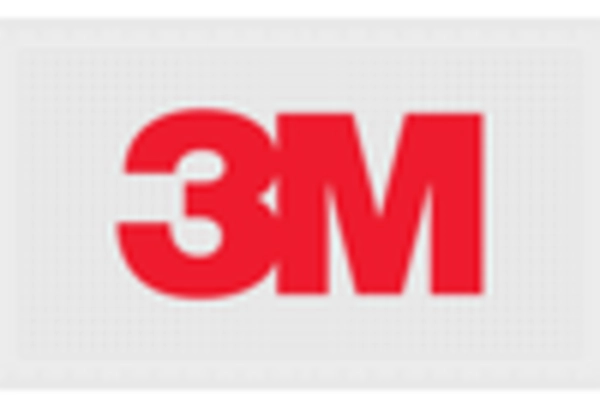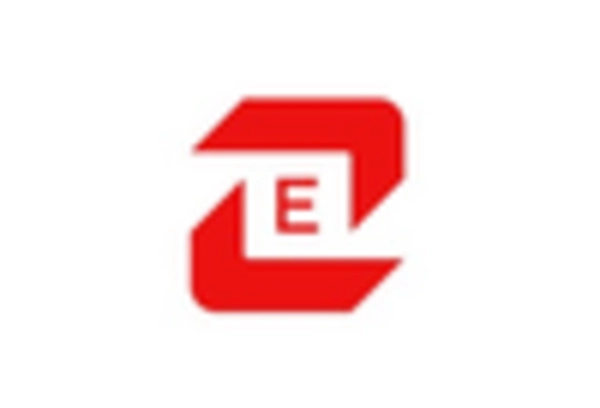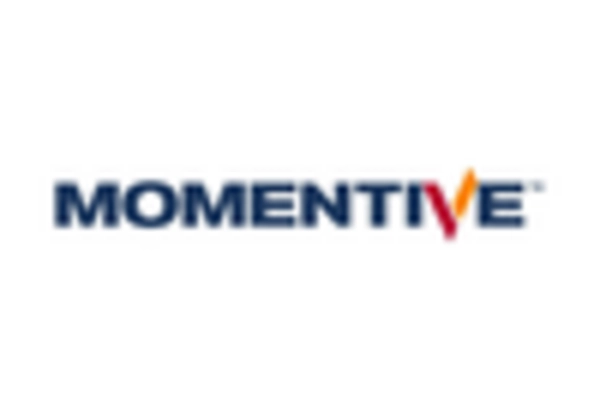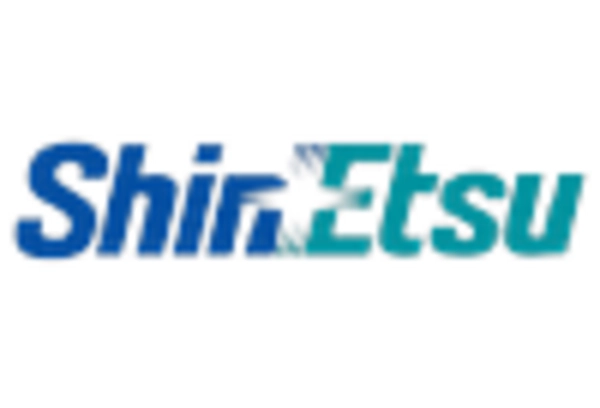Rising Energy Efficiency Standards
The increasing emphasis on energy efficiency standards across various industries appears to be a significant driver for the Silicone Rubber Insulation Coating Market. Governments and regulatory bodies are implementing stringent regulations aimed at reducing energy consumption and enhancing thermal performance. This trend is likely to propel the demand for silicone rubber insulation coatings, which are known for their excellent thermal resistance and energy-saving properties. As industries strive to comply with these standards, the market for silicone rubber insulation coatings is projected to expand. In fact, the market is expected to witness a compound annual growth rate (CAGR) of approximately 6% over the next five years, driven by the need for energy-efficient solutions.
Expansion of Industrial Applications
The expansion of industrial applications for silicone rubber insulation coatings is emerging as a key driver for the Silicone Rubber Insulation Coating Market. Industries such as automotive, aerospace, and electronics are increasingly utilizing silicone rubber coatings for their insulation properties and resistance to extreme temperatures. This diversification into various sectors is broadening the market's scope and creating new opportunities for growth. The industrial sector's demand for high-performance insulation solutions is projected to increase, with silicone rubber coatings being favored for their reliability and effectiveness. As industries continue to explore innovative applications, the market is likely to witness sustained growth in the coming years.
Growing Awareness of Environmental Impact
The growing awareness of environmental impact among consumers and industries is influencing the Silicone Rubber Insulation Coating Market. As sustainability becomes a priority, there is a noticeable shift towards materials that minimize ecological footprints. Silicone rubber insulation coatings are recognized for their longevity and reduced need for frequent replacements, which aligns with sustainable practices. This awareness is prompting industries to adopt silicone rubber coatings as part of their environmental strategies. Market data suggests that the demand for sustainable insulation solutions is expected to rise, with silicone rubber coatings positioned as a viable option. This trend is likely to enhance the market's appeal and drive further growth.
Increased Adoption in Construction Sector
The construction sector's growing adoption of silicone rubber insulation coatings is a notable driver for the Silicone Rubber Insulation Coating Market. With the rise in construction activities, particularly in residential and commercial buildings, the demand for effective insulation solutions is surging. Silicone rubber coatings provide superior protection against moisture, UV radiation, and temperature fluctuations, making them an attractive choice for builders and contractors. The market data indicates that the construction industry accounts for nearly 40% of the total demand for insulation materials, and silicone rubber coatings are increasingly favored for their durability and performance. This trend is expected to continue, further bolstering the market's growth.
Technological Innovations in Coating Formulations
Technological innovations in coating formulations are driving advancements in the Silicone Rubber Insulation Coating Market. Manufacturers are investing in research and development to create enhanced silicone rubber coatings that offer improved performance characteristics, such as better adhesion, flexibility, and resistance to environmental factors. These innovations not only meet the evolving needs of various industries but also contribute to the overall growth of the market. For instance, the introduction of eco-friendly formulations is gaining traction, appealing to environmentally conscious consumers. As a result, the market is likely to experience a shift towards more sustainable and high-performance silicone rubber insulation coatings, potentially increasing market share.
















Leave a Comment